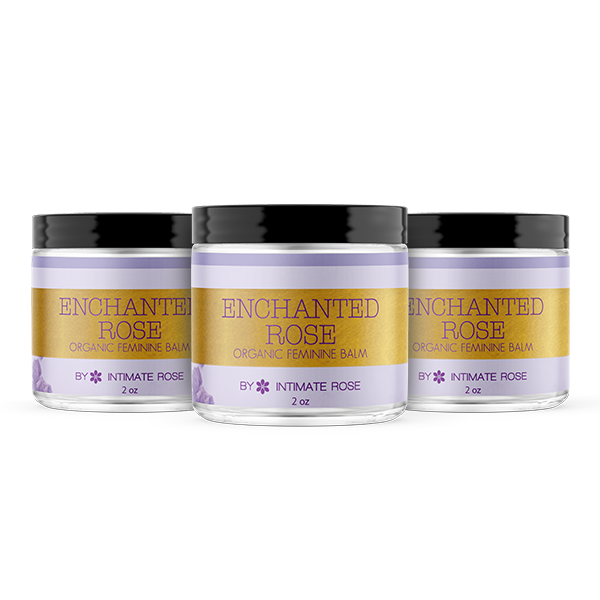Hormone replacement therapy (HRT) can relieve perimenopause and menopause symptoms such as hot flashes, vaginal dryness, mood swings, and poor sleep. In this article, we outline the risks and benefits of HRT, and explain why doctors ask certain questions to determine if hormone therapy is right for you.
What is HRT?
Hormone replacement therapy (HRT) is used to optimize estrogen and progesterone levels during perimenopause and menopause. HRT is also sometimes abbreviated to hormone therapy (HT), and also called menopausal hormone therapy (MHT) or postmenopausal hormone therapy (PHT).
As women reach perimenopause, the production of estrogen and progesterone typically falls and leads to symptoms such as hot flashes, vaginal dryness, interrupted sleep, mood swings, and a loss of bone density, amongst others. For many women, these symptoms continue through postmenopause if left untreated.
However, hormone fluctuations at this time of life do not occur in the same way for every woman. Therefore, treatment is largely based on an individual’s symptoms. Medical history, overall health, and family medical history are also considered.
Some women might be prescribed an estrogen-only version of HRT, known as estrogen therapy (ET), while others are prescribed combined HRT, which includes estrogen and progesterone or progestin. (Progestin is the synthetically-produced version of progesterone.)
It is also possible that some women may require a progestin-only form of HRT during perimenopause or menopause.
Is Hormone Replacement Therapy Safe?
HRT can reduce menopause symptoms and improve the quality of life for many women when taken in appropriate doses and at the correct time; however, it’s not considered safe for all.
In the Women's Health Initiative, the largest ever women's health prevention study, estrogen alone decreased the risk of breast cancer by 23% and reduced the risk of breast cancer death by 40%. (Stefanick 2006, Cheblowski 2024).
Furthermore, progesterone also does not significantly increase the risk of breast cancer (Fournier 2008). Progestin was found to increase the risk of breast cancer by only 1 woman for every 1000 treated (Bluming 2023).
Uterine cancer risk only increases if a patient with a uterus does not take their prescribed progesterone with their estrogen.
Finally, the route in which estrogen is administered impacts a patient’s risk of developing a blood clot or stroke. Transdermal estrogen (such as patches, gels and rings) and local vaginal estrogen do not increase the risk of developing clots, while oral estrogen (taken by mouth) does.
The risk of blood clot when taking oral estrogen is small (4 out of 10,000 women), but this route is typically only offered to very healthy patients with no existing risk factors for heart disease (Streicher 2024).
The Benefits of HRT
By balancing fluctuating estrogen and progesterone levels, HRT can relieve several menopause symptoms and improve quality of life. Symptoms that can be alleviated by HRT include:
- Hot flashes
- Night sweats
- Sleep disturbances
- Fatigue
- Anxiety and mood swings
- Vaginal dryness (atrophy)
- Dyspareunia (pain during sex caused by vaginal dryness)
In addition to alleviating menopause symptoms, HRT is known to prevent osteoporosis, or loss of bone density, in later life due to lowered estrogen levels. Rebalancing the hormones with HRT also helps to maintain muscle strength as the body ages.
How Long Does It Take for HRT to Work?
The length of time to recognize results is dependent on the symptoms, the type of hormone therapy, as well as how much HRT is taken and the duration of treatment. It can take anywhere from a few days to a few weeks for women to feel the benefits of HRT. Typically, it requires up to 4-8 weeks to feel a difference, and benefits can take up to 12 weeks into treatment to feel the full impact of HRT.
When HRT is working, most women first notice an improvement in hot flashes, sleep patterns, and mood swings.
Hormonal and Non Hormonal Menopause Relief

What Are the Alternatives to HRT?
If you have a history of breast or uterine cancer, your healthcare provider may suggest that HRT is not right for you, there are alternatives for managing menopause symptoms.
Lubricants and Moisturizers
Regularly applying organically-made vaginal moisturizers is a safe and reliable way of relieving vaginal dryness during perimenopause or menopause.
Furthermore, using a water-based personal lubricant for gentle foreplay can improve sexual arousal during menopause and prevent the pain during sex that often arises due to vaginal dryness.
Wellness Practices
Practicing regular yoga, meditation, Tai Chi, or acupuncture can help reduce some of the symptoms of perimenopause and menopause. Specifically helpful for relieving anxiety, mild depression, mood swings, and poor sleep, these wellness practices can also alleviate stress, headaches, and tension when practiced regularly.

Get your personalized HRT plan!

Get your personalized HRT plan!
Conclusion
Hormone replacement therapy (HRT) is effective in reducing perimenopause and menopause symptoms. While it is safe for most, the benefits of HRT can be outweighed by the risk of cancer, pulmonary blood clots, and strokes in some women.
If you are experiencing symptoms of perimenopause or menopause, it’s important to consult with your healthcare provider regarding your overall health and family history to determine the correct type of HRT for you.
When HRT is not recommended due to underlying risks, nonhormonal treatments and the self-care practices mentioned above can help alleviate menopausal symptoms.
References
Bluming A, Hodis HN, Langer RD. ‘Tis but a scratch: a critical review of the Women’s Health Initiative evidence associating menopausal hormone therapy with the risk of breast cancer. Menopause: The Journal of The Menopause Society. 2023, doi: 10.1097/GME.0000000000002267.
Cheblowski et al. Randomized trials of estrogen-alone and breast cancer incidence: a meta-analysis. Breast Cancer Res Treat (2024).
Stefanick ML et al.Effects of conjugated equine estrogens on breast cancer and mammography screening in postmenopausal women with hysterectomy. JAMA (2006).
Fournier A, Berrino F, Clavel-Chapelon F. Unequal risks for breast cancer associated with different hormone replacement therapies: results from the E3N cohort study. Breast Cancer Res Treat 2008; 107:103-111.
Medical News Today – HRT: How Long Does it Take to Work? - https://www.medicalnewstoday.com/articles/how-long-does-hrt-take-to-work
National Library of Medicine - Association between hormone replacement therapy and subsequent arterial and venous vascular events: a meta-analysis - https://www.ncbi.nlm.nih.gov/pmc/articles/PMC2515884/
National Library of Medicine - Menopausal Hormone Replacement Therapy and Reduction of All-Cause Mortality and Cardiovascular Disease: It’s About Time and Timing - https://www.ncbi.nlm.nih.gov/pmc/articles/PMC9178928/
Science Direct – The Pros and Cons of Plant Estrogens for Menopause - https://www.sciencedirect.com/science/article/abs/pii/S0960076012002567
Streicher L. Dr. Streicher’s Inside Information: THE Menopause Podcast. The Facts on Clots and Estrogen. Accessed June 26, 2024. https://audioboom.com/posts/8529773-the-facts-on-clots-and-estrogen
The Menopause Society – Hormone Therapy - https://menopause.org/patient-education/menopause-topics/hormone-therapy

Get your personalized HRT plan!












